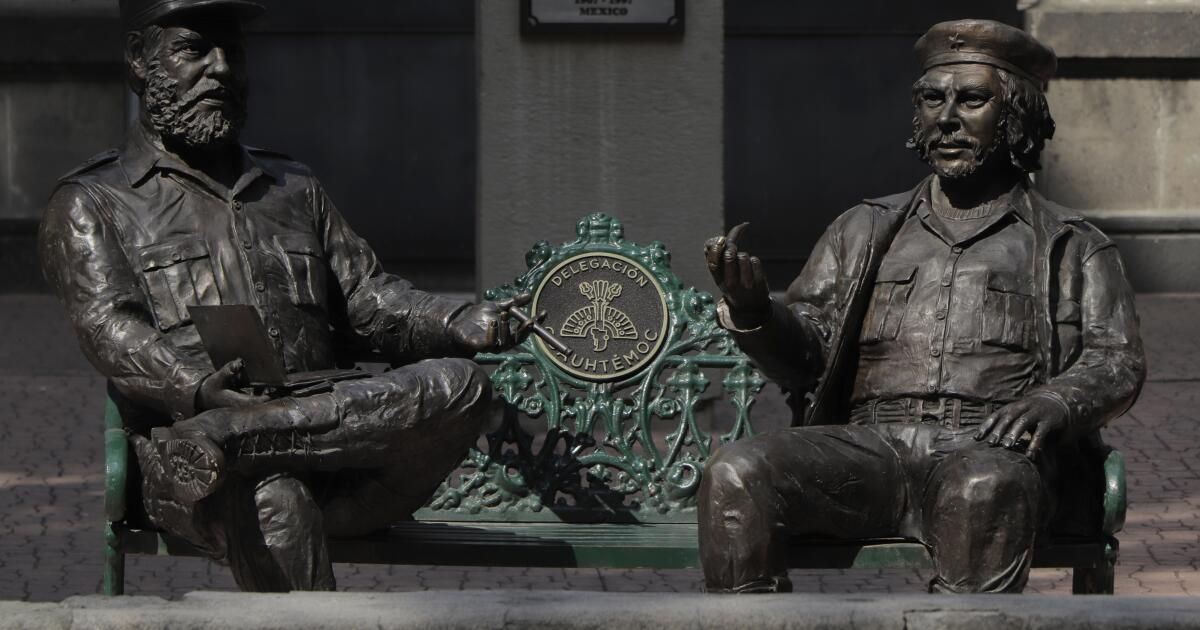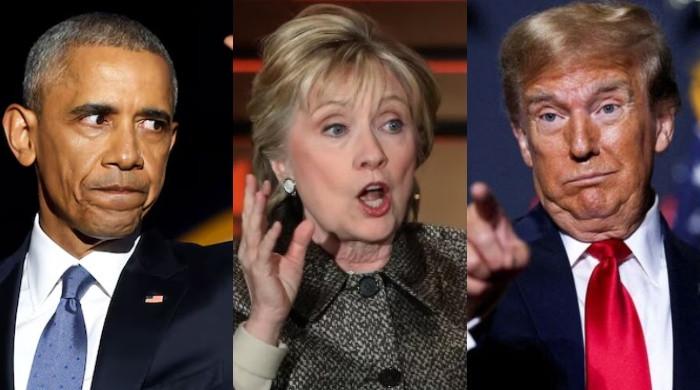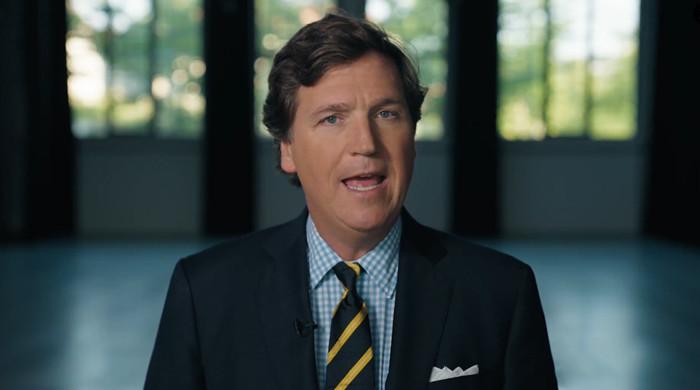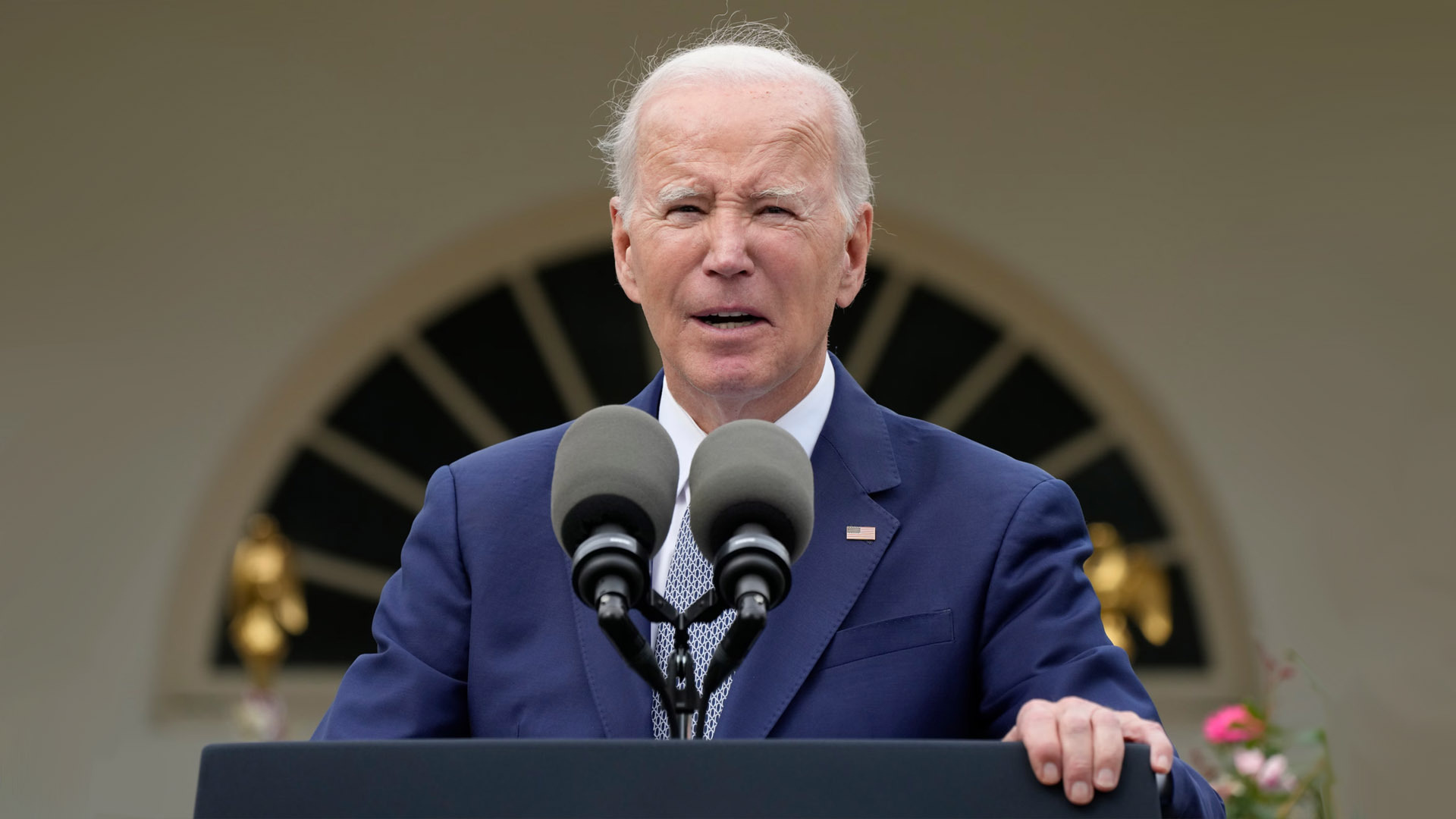Mexico City – Goodbye, Fidel.
See you, che.
The complaints and praise greeted the abrupt extraction this month of a controversial monument in the Mexican capital that commemorates the two revolutionaries, Fidel Castro and Ernesto “Che” Guevara.
The monument, a couple of bronze sculptures and natural size of Castro and Guevara relaxed in a bank, recalls a consistent moment in Mexican and Cuban history, the first meeting of the couple, which took place in an apartment in Mexico City in June or July 1955, according to historians.
At that time, both were twenty -year militants in the training stages of their transformation into leftist icons that would inspire a global generation of revolutionaries and activists.
Fidel Castro makes a televised direction to the Cuban people in 1960, a year after depending on Fulgencio Batista.
(Associated Press)
A leftist government of Mexico City installed the monument in 2017 in a small park in the neighborhood of the tobacco of Colonia in the capital, not far from where the historical duo met for the first time in a meeting of the Cold War that has acquired almost mythical dimensions among many of the left.
In the two sculptures, both men look forward and are dressed in light combat attire: Guevara in their characteristic beret (an immortalized appearance in t -shirts around the world) and Castro wearing a fighter cap. His legs crossed, Castro grabs a cigar in his left hand and a book to his right. Guevara's right hand ensures a pipe.
The sculpture has caused a lot of controversial time: while the adherents of the left generally applauded it, and some visitors would leave flowers, critics assaulted the work of art as an tasteless sanctuary for a bloody communist dictatorship.
'Ideological censorship'
-César Huerta, leftist journalist, in the elimination of statues
Heading his removal on Wednesday was Alessandra Rojo de la Vega, conservative president of the Central District of Cuauhtémoc, where the bank (known as Meeting or encounter) was located.
His decision, Red de la Vega, initially explained on social networks, was based on legality, not politics. She said there was no “one article” to authorize the installation of the monument. Its elimination, he added, would allow the inhabitants of the park to walk in “freedom and security.”
He published images of city workers who took the two figures from the bank and Bronzed Castro and Guevara were ignominiously dragged into an excavator.
But the president of the County then turned to a more ideological justification.
“This city cannot … promote or provide refuge for figures that injured human dignity, either in Mexico or in the rest of the world,” said Red of the Vega Formula.
As for the destination of the dual bronzes, he said that officials can consider a sale, using income, probably from left -handed buyers captivated with the Cuban lifting, for the maintenance of the park.
“If we auction them, it will mark a first place: the communists will use his money, not that of another person, “said Rojo de la Vega.” If they love them so much, they can put them in their garden or in their patio. “
I was not happy with Mexico's leftist president, Claudia Sheinbaum, who said she would talk to the mayor of Mexico City, a political ally, on placing the monument elsewhere.
The question is not whether one embraces or rejects the opinions of the two protagonists, Sheinbaum argued the journalists on Thursday. Castro-Che's meeting, said the president, recalled “a historical moment” that took place in Mexico and deserved a memory exhibition.
The hires here are echoed in the United States on the monuments glorifying the confederate generals: critics denounce screens as exacting and supremacist white traitors, while others argue that the statues simply reflect the story.
'A murderer with good press'
– José Luis Trueba Lara, radio commentator, about Ernesto 'Che' Guevara
In the case of the similarities of Castro and Guevara, Sheinbaum suggested that his removal was a partisan recovery for his own distinctive moment that canceled the monument: the exile of one of the most illustrious reference points in Mexico, A virtual symbol of the city.
In his former position, as mayor of Mexico City, Sheinbaum ordered the elimination of a very high bronze from Christopher Columbus, which, for more than a century, adorned a pedestal in the elegant promenade of the reform of the capital. The stylized painting represented Columbus as a conqueror nobleman: a hand raised to the horizon, the other raised a veil of a globe.
For years, indigenous activists and others organized protests in the statue, labeling Columbus and others Conquerors as perpetrators of genocide. In 2020, Sheinbaum finally ordered that the Columbus monument was eliminated for renovations; He was never returned to his high hanger.
His ejection enraged both the admirers of Columbus and others who saw the monument and an integral marker of the Mexican capital. They accuse Sheinbaum of bowing to political correction.
The traffic circle where Columbus lent his presence now has been called women fighting the roundabout, a meeting point for indigenous handwritten banners, feminist and other protesters.
The great figure of Columbus, meanwhile, remains out of public view in the storage of the museum.
The Castro-Guevara Bank, located in an easy to lose park, was not compared in size or importance with the imposing Columbus of the elegant Paseo de la Reforma. But its elimination illuminated social networks, reviving historical enes.
“An intention to erase the symbols of battle, resistance, Mexican-cuban humanity,” wrote César Huerta, a leftist journalist in X, criticizing action as “ideological censorship.”
A radio commentator, José Luis Trueba Lara, offer good Riddance, calling Guevara “a murderer with a good press” and Castro a “blood dictator”.
Carlos Bravo Regidor, a columnist, rebuked to the left for being more concerned “for the withdrawal of some miserable statues of Fidel and Che that by the misery suffered by those who live below the yoke of the Cuban dictatorship. ”
At the time of his 1955 meeting with Guevara, Castro, then 28, was not out of a Cuban prison for an insurgent attack against the Cuban dictatorship backed by the United States of Fulgencio Batista.
Guevara, almost two years old, free of us “imperialism.” The two young people hit immediately, the historians say that they embark on a friendship and collaboration of a lifetime in the revolutionary project.
Both would be among the 82 combatants aboard the Granma yacht that, in November 1956, sailed to Cuba from the coast of the Gulf of Mexico. His trip, and his subsequent guerrillas campaign, would culminate in 1959 in a historical overthrow of Batista and the imposition of a communist government in Havana.
Fidel and Che They have gone a long time ago, and the book on the Cold War was officially closed more than a quarter of a century. But, as illustrated by the burning debate on a bankless bank statue, the ideological failures of the cold war are far from being completely obscured, at least not in Latin America.
The special correspondent Cecilia Sánchez Vidal contributed.












